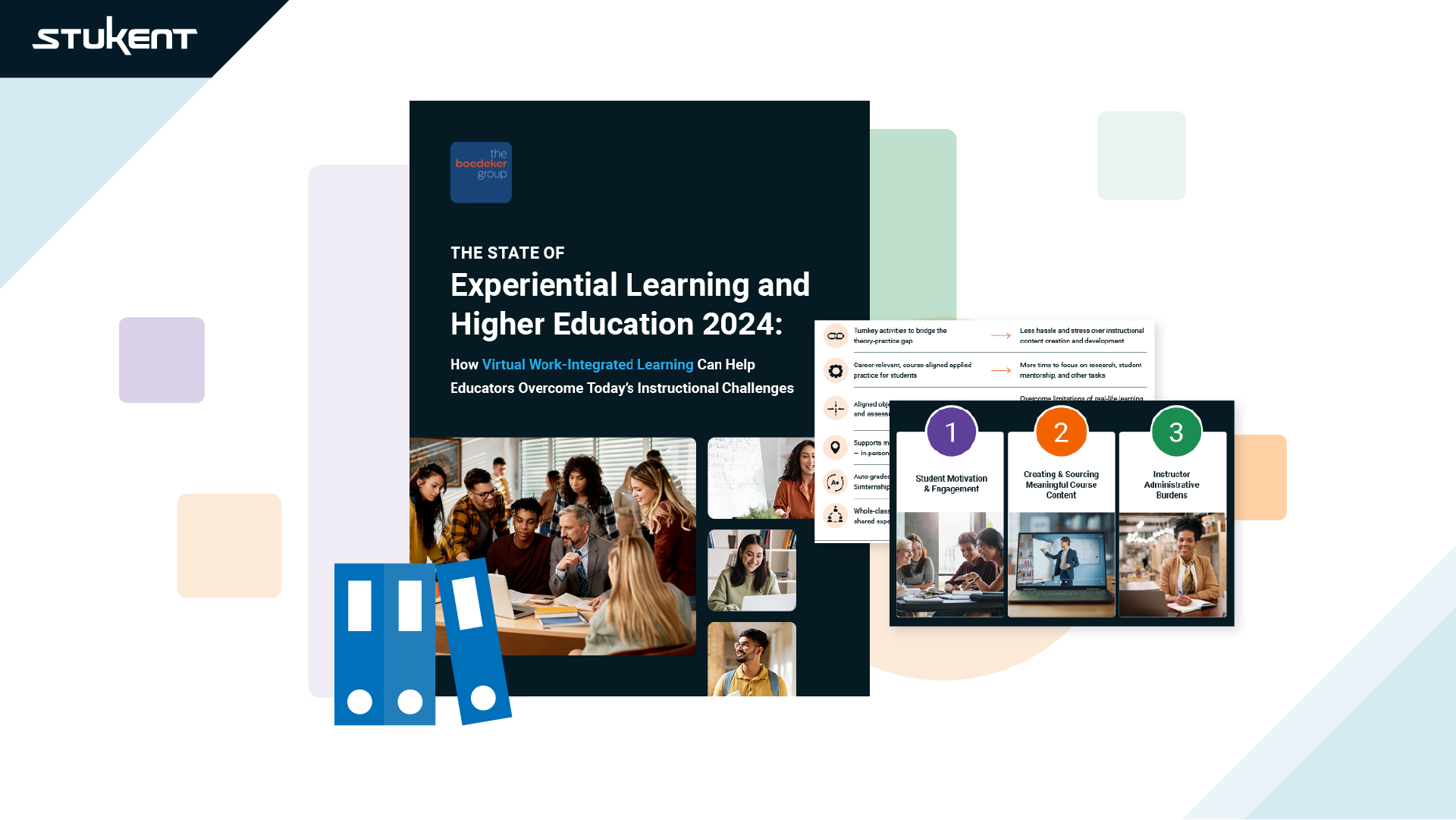Higher education institutions are struggling to attract, retain, and engage students. The COVID-19 pandemic profoundly altered student engagement, causing a significant drop in interest and focus. Many students continue to struggle with finding motivation and relevance in their coursework, a problem highlighted in a 2021 e-journal by Castro and George, who noted that the pandemic forced students to adapt to emergency remote learning, leading to distraction and disengagement.
Adding to these challenges, many employers are shifting away from requiring a bachelor’s degree for entry-level positions. A recent Intelligent survey found that over 80% of employers now prioritize experience over education, and 40% of job advertisements for entry-level roles no longer demand a degree.
Instructors are also facing significant administrative burdens and struggling to create meaningful, career-relevant course content.
How Can Virtual Work-Integrated Learning Help?
Virtual work-integrated learning offers a promising solution to these challenges. This type of learning involves integrating career-focused experiences into the academic curriculum through online simulations and virtual internships. This approach helps students connect their coursework to real-world applications, thereby enhancing their own connection to their learning.
Experiential learning, a key component of virtual work-integrated learning, allows students to apply theoretical knowledge in practical settings, making learning more dynamic and relevant. According to the Center for Innovative Teaching and Learning, experiential learning engages students in direct experiences tied to real-world problems and situations, which significantly boosts their motivation and engagement.
The Role of Simulations
Simulations provide a controlled environment where students can practice applying their knowledge and skills in realistic scenarios without real-world consequences. This approach helps students develop critical competencies and confidence in their abilities.
Simulation-based learning has several advantages. It offers an approximation of real-world practice, allows learners to overcome the limitations of real-life learning environments, and can be a highly effective approach to developing complex skills. By simulating workplace tasks and challenges, students can better understand the professional applications of their coursework, enhancing their task valuation and motivation.
Simulations also address the challenge of creating and sourcing meaningful instructional content. By partnering with subject matter experts from both academia and industry, simulation developers can create immersive experiences that align closely with course objectives and current industry standards. This alignment ensures that students are learning relevant skills that will be directly applicable in their future careers.
The Power of Simternships
Stukent® Simternships™ are a prime example of effective, virtual, work-integrated learning tools. These simulated internships immerse students in real-world roles, such as marketing managers, PR officers, and SEO specialists. Through multiple in-depth rounds, students interact with simulated supervisors and coworkers, perform realistic tasks, and receive individualized feedback on their work.
Simternships offer several benefits to both students and instructors:
- Career-Relevant Practice: Students gain hands-on experience in industry-aligned roles, which enhances their employability and helps them see the value of their coursework. Carter Bagley, a student at Utah Valley University, said, “Stukent’s innovative Simternships provided me with an invaluable opportunity to apply classroom knowledge to real-world scenarios, which helped my understanding of marketing practices and significantly boosted my confidence in the process.”
- Auto-Graded Components: Many aspects of Stukent Simternships are auto-graded, reducing the administrative burden on instructors. This feature allows educators to focus more on teaching and mentoring rather than grading, improving overall course management.
- Alignment with Course Objectives: Each Simternship is designed to align with specific course objectives, ensuring that the simulated tasks and challenges are relevant and beneficial for students. This alignment helps bridge the gap between theoretical knowledge and practical application.
- Support and Accessibility: Stukent provides world-class technical support and resources to ensure that both instructors and students can effectively use the Simternships. The platform is user-friendly and integrates seamlessly with various learning management systems, making it easy to incorporate into existing curricula.
To learn more about the challenges faced by higher education institutions and how virtual work-integrated learning can help, download The State of Experiential Learning and Higher Education 2024: How Virtual Work-Integrated Learning Can Help Educators Overcome Today’s Instructional Challenges report.
By offering these comprehensive and career-relevant learning experiences, Stukent Simternships help educators address many of the instructional challenges they face today. They provide a turnkey solution for integrating experiential learning into the classroom, promoting student engagement, and enhancing overall learning outcomes.
To learn about Stukent’s first-in-the-world Simternships and courseware and to get FREE instructor access to Stukent materials, visit our website.






